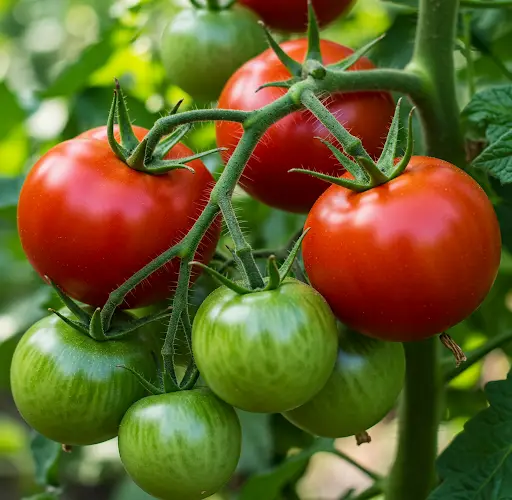How to Properly Prune Tomato Plants for Maximum Growth and Yield
Pruning tomato plants is a task that many gardeners overlook or perform incorrectly, often with unintended consequences. Knowing how and when to prune is essential to promoting healthy growth and boosting fruit production. One of the most common mistakes made in tomato gardening is not understanding the different needs of determinate and indeterminate varieties. Each type has a unique growth habit and requires a tailored approach to pruning.
This guide will walk you through the correct pruning methods for both types of tomato plants, ensuring your garden yields a bountiful and healthy harvest.
Understanding Tomato Plant Types
Tomatoes fall into two main categories: determinate and indeterminate. Recognizing which type you’re growing is the first step in developing an effective pruning strategy.
-
Determinate Tomatoes (also known as “bush” tomatoes) grow to a fixed height, set all of their fruit within a short period, and then stop growing. These varieties are more compact and are often ideal for container gardening or smaller garden spaces.
-
Indeterminate Tomatoes (also called “vining” tomatoes) continue to grow and produce fruit throughout the season until frost or disease kills the plant. These plants can become quite tall and sprawling if not pruned and supported properly.
Pruning Indeterminate Tomato Plants
Indeterminate tomato plants benefit significantly from regular and careful pruning. Without it, these plants can become overly bushy, making them more susceptible to disease and less productive overall.
1. Remove Lower Leaves
Start by removing the lower leaves that are close to the soil. These leaves are the most likely to come into contact with the ground, where they can pick up harmful fungi and bacteria. Removing them improves airflow around the base of the plant and reduces the risk of disease.
2. Identify and Remove Suckers
Suckers are small shoots that appear in the junction where a branch meets the main stem. If left unchecked, these suckers will grow into full-sized branches, creating a dense, overcrowded plant. This makes it difficult for sunlight and air to penetrate the interior of the plant, increasing the chances of disease and reducing the plant’s ability to focus energy on producing fruit.
Carefully remove most of the suckers to direct the plant’s energy into fruit development rather than excessive foliage. However, don’t remove every sucker indiscriminately. Choose two or three strong stems to allow the plant to develop a manageable number of main branches. This technique, often referred to as “single-stemming” or “double-stemming,” keeps the plant open, manageable, and productive.
3. Support and Train the Plant
Because indeterminate tomatoes grow continuously, they require sturdy support. Use cages, stakes, or trellises to keep the vines off the ground and upright. This helps in maintaining good air circulation and makes harvesting easier.
Pruning Determinate Tomato Plants
Unlike their indeterminate counterparts, determinate tomato plants require very little pruning. These varieties are designed to grow to a specific size and set fruit all at once, so excessive pruning can severely reduce their yield.
1. Remove Only the Lower Leaves
Just like with indeterminate varieties, it’s beneficial to remove any leaves that touch the soil. This reduces the risk of disease without affecting fruit production.
2. Avoid Removing Suckers or Branches
Do not prune suckers or additional branches on determinate plants. These suckers often contain flower buds that will develop into fruit. Removing them will reduce the number of tomatoes the plant can produce. Since determinate plants have a limited window for fruiting, preserving as much foliage as possible is crucial to achieving a full harvest.
The only exception is if the plant is experiencing disease, in which case you can remove the affected leaves. Additionally, if the plant is producing a flower cluster too close to the ground before it reaches a desirable height, it can be removed to encourage stronger early growth.
Common Mistakes to Avoid
-
Pruning determinate tomatoes like indeterminate varieties. This mistake often results in reduced fruit production because essential flowering stems are removed.
-
Letting indeterminate tomatoes grow wild. Unpruned indeterminate plants become tangled and overcrowded, increasing disease risk and reducing the quantity and quality of the fruit.
-
Removing too many leaves at once. This can stress the plant, reduce photosynthesis, and hinder overall growth.
Conclusion
Proper pruning can make a dramatic difference in the health, growth, and productivity of your tomato plants. Whether you’re growing determinate or indeterminate tomatoes, understanding their growth habits is essential to developing an effective pruning approach. Removing just the right amount of foliage while preserving essential flowering stems helps balance energy distribution within the plant, encourages larger and more abundant fruit, and minimizes the risk of disease.
Take the time to observe your plants, understand their type, and apply the appropriate pruning techniques—and you’ll be rewarded with a thriving tomato harvest all season long.



